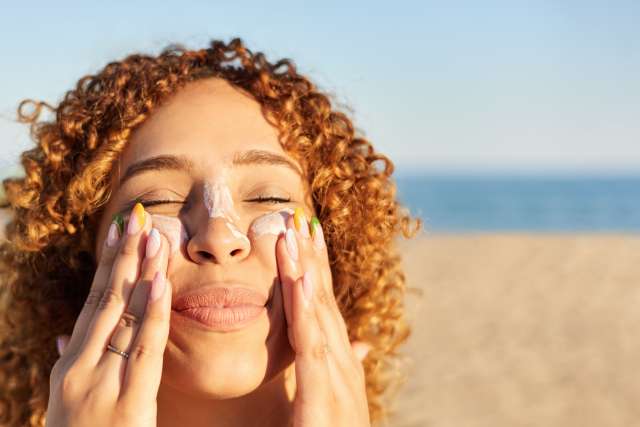By age 70, one in five people in the U.S. will have developed skin cancer — making this disease the most common type of cancer.
But despite those scary statistics, you actually have a lot of control over your risk of getting skin cancer. It is very preventable and — when caught early — highly treatable. Learn how you can stay safe while still enjoying time in the sun.
How the sun damages skin
Two types of ultraviolet (UV) rays from sunlight hit our skin — UVA and UVB. Both have the power to damage skin, but each works differently.
UVA rays penetrate deep into the skin. There, they damage collagen and elastin (substances that keep skin looking young and smooth). That’s why UVA rays are often blamed for causing wrinkles. But in addition to speeding up skin aging, UVA rays also cause damage to skin cells that can lead to cancer.
UVB rays are known as the tanning or burning rays. They hit the outer layer of the skin, leading to reddening or darkening of the pigment. UVB rays can also damage the DNA in skin cells. Over time, those changes in DNA can lead to cancer.
The sun isn’t the only way you can get UV damage. Using a tanning bed delivers extremely high doses of UV radiation. Not surprisingly, have found that people who regularly use tanning beds are at higher risk of skin cancer.
Using sunscreen and other sun protection to stay safe
The number one way to prevent skin cancer is to protect your skin from the sun. The vast majority of skin cancers (up to 90%) are directly related to exposure to UV rays. But that doesn’t mean your only option for staying safe is staying indoors.
Using an effective sunscreen — with an SPF of 30 or higher — every day is the most important defense against skin cancer. Use it on any exposed skin year-round and in all types of weather (up to 80% of UV rays can penetrate light cloud cover).
Applying sunscreen isn’t just a one-and-done event. If you’re outdoors, you need to reapply sunscreen every two hours or as soon as you're done swimming or sweating. It’s also important to use enough to truly protect your skin. Experts recommend adults use a full ounce (the amount in a shot glass) to cover your whole body. If only certain areas are exposed, use about a teaspoon per body part (one for your face, one for each arm and so on).
No matter how diligent you are about applying sunscreen, it shouldn’t be your only sun protection tool. Other ways to stay safer outdoors include:
- Covering up with sun protective clothing (including rash guards for swimming)
- Seeking shade (especially between 10 am and 4 pm when the sun is strongest)
- Wearing a wide-brimmed hat
Types of skin cancer
There are three main types of skin cancer:
- Basal cell carcinoma: This most common type of skin cancer affects about 3.6 million people in the U.S. each year. It develops in the basal cells in the outer layer of skin and rarely spreads beyond the skin.
- Squamous cell carcinoma: This type of cancer develops in the squamous skin cells located in the top layer of skin. If it’s not detected early, it can spread into deeper layers of the skin or even to other parts of the body.
- Melanoma: This is the least common, but most dangerous, type of skin cancer. Melanoma develops in skin cells called melanocytes, but it can quickly spread to organs throughout the body.
Learning to spot early signs of skin cancer
Early detection and prompt treatment of skin cancer are essential for good outcomes. Even melanoma is curable when caught and treated in its earliest stages.
Most experts recommend seeing a dermatologist every year for a full-body skin check. If you have fair skin, blonde or red hair, a family history of skin cancer or history of severe sunburns, you are at higher risk and may need to go more often. It’s important to note that while skin of color is at lower risk, people of any ethnicity can get skin cancer.
The dermatologist has special tools for examining moles and other spots on your skin. These can help them determine if anything requires further testing (such as a biopsy of some skin cells) to look for cancer.
In between doctor’s appointments, you should check your own skin. Skin cancer often develops in existing moles, so be alert to any changes in size, shape or color of moles and freckles. But not all types of skin cancer look the same. Other possible early signs of skin cancer include:
- Itchy, red patches of skin
- Rough, scaly patches of skin
- Shiny red or skin-colored bumps
- Sores that won’t heal (and continue to bleed or ooze)
Prevention and protection can greatly decrease your risk of skin cancer. And you can do it without sacrificing fun outdoors.



